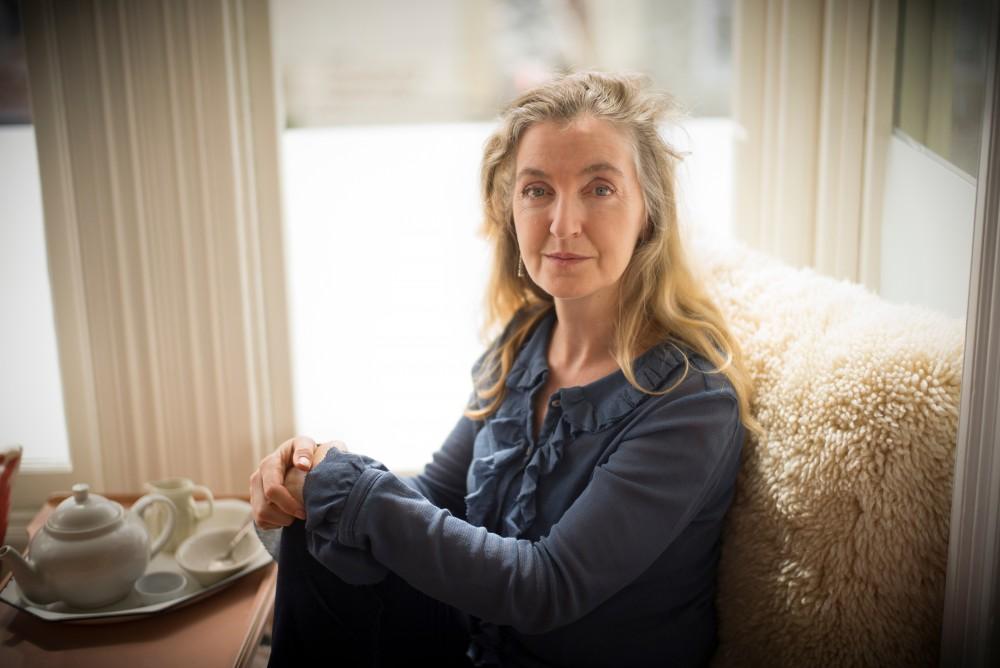Author, activist speaks at GVSU for Fall Arts Celebration

GVL / Courtesy – David Butow Author Rebecca Solnit poses at her home in San Francisco on Saturday, June 15, 2013.. The non-fiction writer’s new book is the Faraway Nearby, which is about story-telling, memory-loss, illness and other topics.
Nov 21, 2016
Renowned author, historian and activist Rebecca Solnit visited Grand Valley State University to present a lecture as part of the Fall Arts Celebration Monday, Nov. 14 in the Eberhard Center.
Solnit, a San Francisco-based writer, spoke about the artist’s and activist’s roles in “seeing the invisible.” Pulling examples from her publications, Solnit emphasized the importance of recognizing issues that often go unseen in American cities such as climate change, political corruption, oil spills, economic inequality, gender inequality and government response to disasters.
Throughout the course of her career, which began at the age of 22, Solnit has written 17 books and received two National Endowment for the Arts fellowship awards, a Guggenheim fellowship award, the Lannan literary award and the National Book Critics Circle award. She also regularly contributes to Harper’s magazine, where she holds the title of the first woman to regularly write the Easy Chair column.
“A few years after I moved away from Laramie, Wyoming, a friend called to tell me that there was a California writer visiting the university (in Wyoming) and she was doing some different and extraordinary things,” said GVSU writing professor Beth Peterson. “The conversation my friend and I had would go on to shape my teaching and my writing. Rather than just talking about ideas, I decided to venture out into the world with my students.”
Of course, Peterson was referring to Solnit, who encourages her readers to venture out into the world, take thorough notes of their surroundings and advocate for positive change in society. She stressed the importance of becoming familiar the surrounding environment, not just to navigate the area, but to understand the needs and issues of the community.
In addition to her books, Solnit has worked with cartographers and artists in San Francisco, New Orleans and New York to create three creative atlases that re-imagine how cities are mapped. Ever since she can remember, Solnit has had a fascination with maps, not only because of the stories they tell but because of their precision and impact. After she published her first atlas, Solnit realized many people enjoyed maps as much as she did.
“I always have been and I always will be a writer, but there were things I wanted to say about places that I felt could be said in a different way with maps,” Solnit said. “They have a kind of powerful authority and an immediacy.”
When creating her maps, Solnit took each city’s history into account. Her goal was to put important historical events on the maps in the areas they happened. She said many people don’t know much about their city’s history–they don’t know why certain buildings exist or what occurred on the city’s open land areas. People don’t really look at the places outside of their own community, just as they don’t notice the issues in other communities.
During her lecture, Solnit presented a few examples of her work, one of which was a map she created of New York called “City of Women,” which touched on the subject of gender inequality. In her map, Solnit renames the streets of New York. She changed all statues and streets named after notable men in history to names of remarkable women in history. Her map is a celebration of the women leaders who have shaped New York, yet weren’t allowed to be recognized.
“This was a great discovery process for me,” Solnit said. “I suddenly realized doing it that every place I’ve ever lived, so many things that are named after people are (named after) men. We live, essentially, in a ‘man-scape,’ and that really affects us.”





















